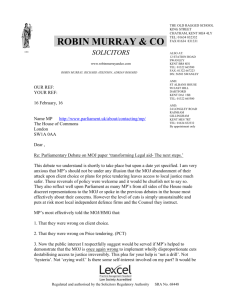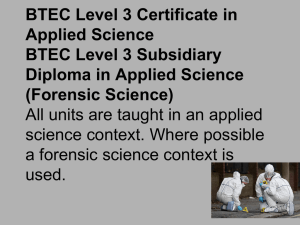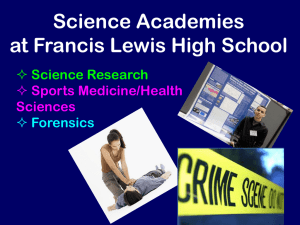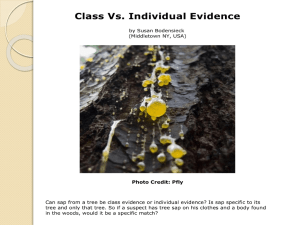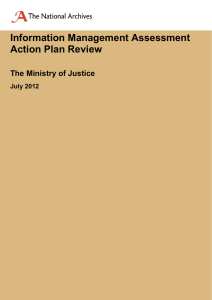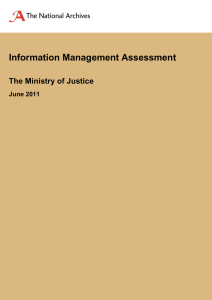summary of symposium and issues
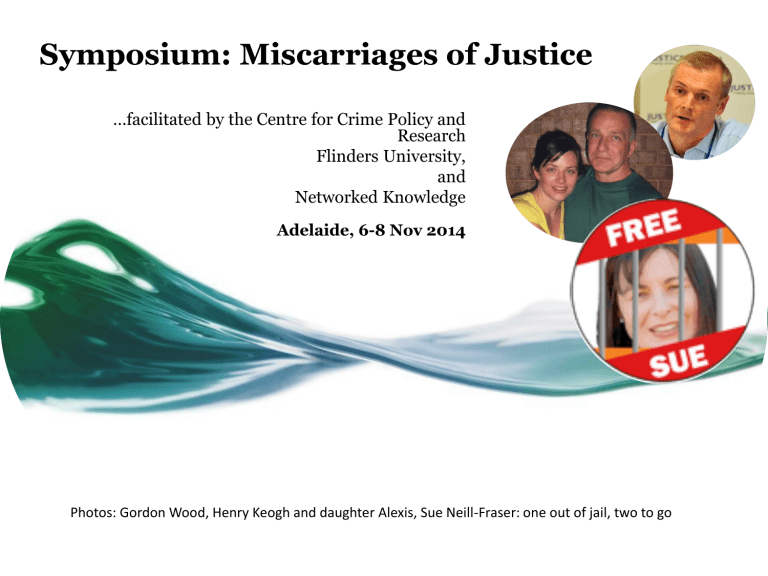
Symposium: Miscarriages of Justice
…facilitated by the Centre for Crime Policy and
Research
Flinders University, and
Networked Knowledge
Adelaide, 6-8 Nov 2014
Photos: Gordon Wood, Henry Keogh and daughter Alexis, Sue Neill-Fraser: one out of jail, two to go
Andrew Goldmsith, Strategic Prof of Criminology,
Flinders U.
• Welcomed participants to important national symposium
• Fortunate to have the Canadian and international expertise of
Prof Kent Roach, Prichard Wilson Chair in Law & Public Policy at
University of Toronto
• Expert on Wrongful Convictions, Constitutional Law and Aboriginal
Issues
• Wide variety of people present, drawn from throughout Australia
• Hope symposium can make major contribution to improving the justice system and the Rule of Law in Australia
Prof Stephen Cordner, Vic. Inst. of Forensic Medicine
• Such symposiums need to be regular around Australia
• MOJ cases: ‘Staggering numbers in US; ‘frightening’ in UK
… and we don’t have any numbers for Australia
• Lawyers can disagree in court, why can’t forensic scientists disagree?
•
When the High Court complained about a particular forensic pathologist, there was no legal/judicial/profession system to respond
•
Not now acceptable for a single person (not part of a structure) to be an expert…but that severely limits the numbers available
•
Forensic scientists are kept in dark on what case about, what facts are
• Justice Maxwell has reinvigorated Practice Directions in Victoria
Dr Rachel Dioso-Villa, Griffith U Law & Crim Justice
• Victims suffer long-term effects, both exonerees & families; unique
• In prison, innocent person can’t admit guilt, so no parole benefits
• Wrongfully convicted spend 2 ½ months to 15 years in prison
• We need to utilise systems theory: that is to analyse the legal system the same way aviation mistakes, medical errors are treated
• Usually no single error causes the fatal outcome
• In the US forensic sciences were ‘badly fragmented, needed major overhaul’, Nat Acad Science USA 2009 found. What of Australia?
• Little evidence rigorous scientific base of some forensic experts
Bibi Sangha, Sen. Lecturer Flinders U & barrister
• MOJ cases are a breach of internatonal HR obligations, and ICCPR
• New statutory right of appeal in South Australia, 5 May 2013, introduced to balance new double jeopardy provisions
• UK uses “unsafe” test, not “substantial” or “significant”
• In the new SA law ‘fresh and compelling’ evidence is a very high bar, higher than original trial and first appeal
• Fears the new law would ‘open up floodgates’ – hasn’t happened
Joseph Crowley, barrister and lecturer, Bond U
• ‘Justice’ values the decision of juries…perhaps too much
• Rules of court are a major problem
• Definitions change: in 1922, early High Court appeal rules were based on civil law, not criminal law
• There’s an enormous imbalance…rules should favour appellant
• High Court’s decision in 1974 was high point
• …but Keane J in Qld has laid down a new definition in May 09
• The ‘Hydra’s Head’ of confusion has grown back, because the definition has now crept from common law into statute law in SA
Tom Percy, WA barrister and MOJ freedom winner
• 1967 Australia’s last hanging, 1964 in WA (but ‘death’ sentence passed there to 1984: he sat next to Brenda Hodge at her sentencing)
• This changed him from pro- to anti-hanging
• Estelle Blackburn came to him, after researching Button case 6 years
She had met John Button’s brother at dance…extreme serendipity
• Key player was judge David Malcolm, later CJ (died Oct 2014)
• Full and complete disclosure by prosecutors is obligatory: but there are no effective personal sanctions (profession or punitary penalties): options should include imprisonment
Dr Bob Moles, legal author, principal of
Networked Knowledge
• Overall issue is complex system constipation; stubborn resistance of legal hierarchy to change based on proven miscarriages
• The rule of law is not fairly or properly applied
• In SA, the Chief Forensic Pathologist appointed in 1968 Colin
Manock signed 10,000 autopsies…“not qualified to sign one”
• No mechanism available to permit correction of errors
• Govts say citizens are entitled to justice, but govts will not deliver it
• Serious systemic legal system failures over a long time
• Australia need major judicial inquiry, or Crim Cases Review Comm
Dr David Hamer, Sydney U: Eastman case, ACT
• David Eastman: circumstantial case, cost $20m over nearly 20 years
• Forensic expert’s gun residue evidence extremely discredited
• Police/DPP non-disclosure of his unreliability, known at time
• Inquiry found police misconduct ‘unfair & unlawful’, tunnel vision
• Ineffective defence due partly to Eastman mental condition
• Eyewitness misidentification also, mafia hit theory discounted
• Institutional barriers: jury/appeal court got it wrong
• Correcting MOJ cases is more difficult after appeal, as defendants lack resources…need a Crim Cases Review Comm
Lynne Weathered, lecturer & director Innocence Project,
Griffith U.
• Learning platform, service to wrongfully convicted as last resort
• Students discover the realities of legal practice for themselves
• In US, 321 DNA exonerations (representing 4337 years in prison)
• 1416 cases of non-DNA exoneration
• In non-DNA cases, 56% wrongful convictions based on perjury
(rises to 81% in child sexual abuse cases)
• Authorities reluctant to help: in one case, had to wait 8 years to be told evidence not held
• Need DNA testing and other uniform legislation throughout Aust
Assoc. Dean, Prof Willem de Lint, criminologist,
Flinders U
• A-NZ Criminology conference to be held Adelaide late-2015
• May be useful to focus on Miscarriages of Justice
• Gatherings of MOJ group needs to be more regular
Prof Gary Edmond, UNSW and ARC Future Fellow
•
Jury research asks incorrect questions: therefore ‘findings’ wrong: don’t reveal jury abilities or performance re forensic evidence
•
Prosecutors bear main responsibility: fair AND understandable
•
Some forensic evidence non-susceptible to rational evaluation
• Validation studies particularly required; measure error rates
•
Forensic ‘Standards’ may not be very robust (gait evidence doubtful)
•
Insidious biases, may be subconscious
•
Problems partly from “hubris and isolation of judges and lawyers”
•
DNA likelihood: dwarfed by 1/100 to 1000 real-world error chance
• We’re setting up courts, judges, juries to FAIL over forensics
Barbara Etter, science grad & lawyer, former Asst. Comm
WA Police and pro-bono MOJ case linchpin
• Sue Neill-Fraser case: legal PLUS ‘people power’ & media needed
• Highly circumstantial: no body, no weapon, no confessions
• Claim of prior kill bid: influenced police investigation
• Subsequent on-yacht DNA match with young woman
•
Like Chamberlain, forensic errors: preservation, tests, presentations in court, ‘winching reconstructions’ (Chamberlain re-run)
•
DPP claimed victim bashed with wrench/screwdriver
•
New DNA expert evidence: but had to go via merry-go-around
•
Lessons NOT learned from Chamberlain: Nat Inst FS role/resourcing
• List of strategies for forensic science area, and MOJ needs
Dr Kris Klugman & Bill Rowlings, Civil Liberties Aust
Eve Ash, 7 Dimensions films, ‘Shadow of Doubt’
• Need for campaign (Aust and Canada) so situation not the same in 10 years
• Individual MOJ cases need widespread support: family, community & legal
• Use max possible media streams: print, radio, TV, film, video, songs, plays
• ‘Colour and movement’ enliven a usually ‘dry’ subject
• National MOJ campaign will require similar outlook: taut, hard facts; strong, simple visuals; catchy video & music & materials support
• Campaign needs cross-discipline approach (legal/academic and social sciences/media, aided by psychology communication techniques and tools)
• Achievable targets, which can be measured, for Canada and Australia
How can we improve what
MOJ will be like in 2024?
•
AIM: reduce MoJ by 20% in
Australia and Canada in a decade
• Focus on 3 States/Provinces to start
•
Overview:
Measure current rate of MoJ
Create awareness campaign
Implement x 4 initiatives a year
Measure success at 3-5-10 years
Symposium attendees are the core MoJ network
Research
Change agents/stu dents
MoJ
Network is us + victims
Lawyers
Legal systems
Media/etc
Who does what?
• Research: o
Existing information Legal/academic + social science/media panels o
Conceive/commission studies Australia: Bob Moles, Canada: Kent Roach
• Marketing/communications plan AIDWYC in Toronto?
o
Create base materials Canada and Australia o
Run campaign 2016-2018
• Next Symposium
•
Budget:
• Contact information: o
Us (the Network) +volunteer Change Agents
Adelaide Nov 2015 ? (with Criminology conf)
None needed until late-2015
Canada: AIDWYC & Kent Roach To be confirmed o
Australia: Bob Moles, Networked Knowledge
Looking Ahead
• Milestone 1: finalise research program
- by June 2015
• Finalise campaign plan
- by November 2015
• Start to implement campaign:
- from January 2016
• First success measurement
- in 2018
•
Modify and expand campaign
- in 2019
• Target for major change
- by 2024


